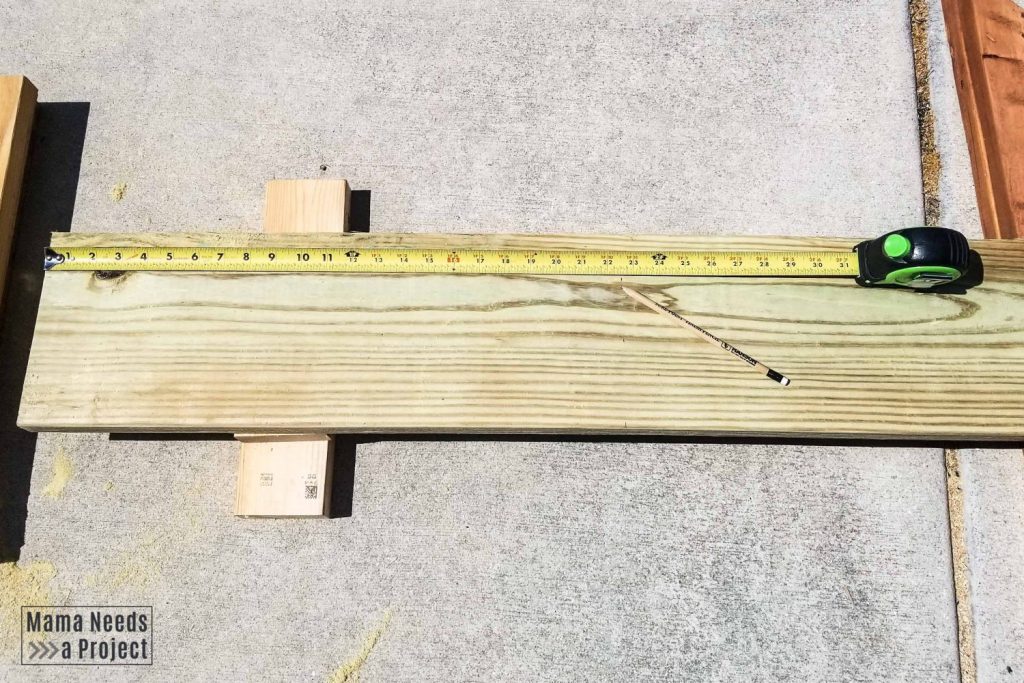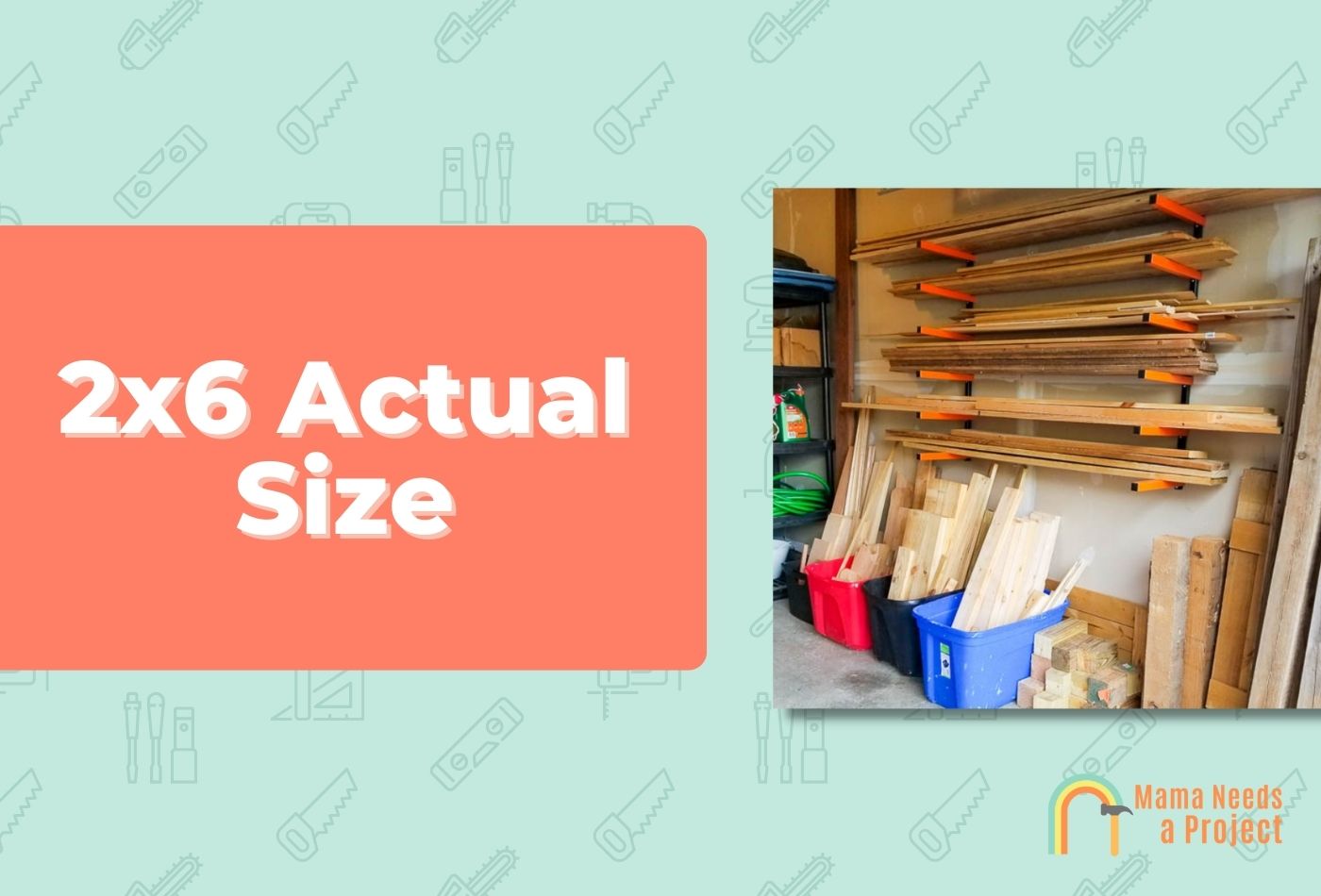2×6 Actual Size: Simple Answer & Facts
The 2×6 may not be as well-known as the 2×4, but nonetheless it’s a common board that’s often used for structural framing.
But is a 2×6 actually 2”x6”? The short answer is no, but why?
In this post, I answer this question in depth so you can know the actual size of 2x6s as well as the reasons for board-size discrepancies.
- 2×6 boards are really 1.5”x5.5”, meaning they’re 1.5” thick and 5.5” wide. In meters, the actual size of a 2×6 is 38 x 140 mm.
- Most 2x6s have a span (length) that’s 8’-12’.
Actual Size of a 2×6
The size of a standard 2×6 is actually 1.5”x5.5”.
That’s right – it’s not actually 2″x6″.
You should always use the exact measurements when planning a construction project, otherwise you’ll run into problems right away.
That said, once you work with enough 2x6s, the actual measurements will be committed to memory and you won’t get confused when you see 2×6.
Of course, you could find a board that has an actual size of 2”x6”, but since it wasn’t 2”x6” when first cut it can’t be classified as a standard 2×6.
Check out my guide to understand the actual size of a 2×4 for more help!

Actual Size of a 2×6 MM
A standard 2×6 is 38 x 140 mm, so if you see these metric dimensions you’re really looking at a board that’s 1.5”x5.5”.
Even though the U.S. doesn’t follow the metric system, it’s not uncommon to come across would with metric dimensions, especially if you have a woodworking hobby.
Therefore, it’s best to be familiar with common metric dimensions, otherwise there may be a hiccup or two before you complete the project.
What Is Dimensional Sizing?
Dimensional sizing is a system of measuring that’s often used for wood and other materials.
Since it’s the most commonly used measuring system for hardwoods, softwoods, and wood-related materials, the vast majority of wood that big-box hardware stores and other retailers sell is measured using dimensions.
It’s a common mistake to think 2×6 means 2”L x 6”W, but these aren’t the right dimensions. The first number represents the board’s thickness, while the second number represents its width.
The span, or length, of a 2×6 can vary, but most are 8′-12’ long, since boards with a span longer than 12’ are more prone to buckling.
Therefore, if you see a board that says 2x6x8, you’re looking at a board that’s 2” thick, 6” wide, and 8′ long. The actual measurements would be 1.5”x5.5”x7.5”.
The board is 2”x6”x8’ after being cut, but after processing its overall size is slightly reduced.
Nominal Size vs. Actual Size Dimensional Lumber
The technical term for the “well-known dimensions”, i.e. 2×4, 4×4, 2×6, etc., is nominal size.
A board’s nominal size differs from its actual size, in that the actual size is always smaller.
The reason for the discrepancy in nominal vs actual size is due entirely to wood processing, and both hardwood and softwood lumber go through a fair bit of processing before they’re worthy of being the boards consumers pick up at their nearest wood retailer.
Woodworkers need to be aware of both nominal and actual sizes: nominal sizes so they know what to look for when shopping for wood, and actual sizes so they construct precisely measured projects.
As far as a 2×6 is concerned, its nominal size is 2×6, whereas its actual size is 1.5”x5.5”.
Why is a 2×6 not 2″ by 6″?
A 2×6 is technically 2″x6″ when first cut, but after processing it shrinks to about 1.5″x5.5″.
And other than nominal dimensions just being easier to say and remember, the main reason why nominal dimensions are used over actual dimensions is scarcity.
Specifically, ever since the United States became an industrialized nation, periods of wood scarcity have popped up, prompting different reactions and measures.
And during these uncertain times, lumber cutters and processors would call for more uniform sizing standards.
It was during the height of World War II, when wood was dangerously scarce, that other materials, mainly concrete and steel, became more widely used, prompting the wood industry to essentially adopt nominal sizing 100% in effort to compete with the now-popular materials.
Twenty years later, formal wood sizing standards would finally be enacted, clearly distinguishing nominal from actual dimensions.
So today, no matter where you are in the U.S., you can count on a board labeled 2×6 being 1.5″×5.5″.
In the early 2000s, a lawsuit was brought against Home Depot, the most well-known lumber store at the time, alleging that the company knowingly misled consumers by failing to disclose the difference between nominal dimensions and actual dimensions. The suit went nowhere.
When Are Boards Sized in Quarter Inches?
Freshly cut pieces of lumber are often sized in quarter-inches by lumber mills and similar wood processing facilities.
The quarter-inches exclusively refer to the board’s thickness.
Therefore, if you see a piece that’s 8/4, or 2” thick, it could have an uncommon length or width.
Since the length and width are not specified, most woodworkers plane this kind of wood until the desired thickness has been reached, and then they attach the planed pieces lengthwise or widthwise to get the desired overall length or width.
To determine how big a piece of raw lumber is in quarter-inches, simply divide the first number by the second number. Below are some common quarter-inch wood sizes:
- 4/4 = 1” thick
- 8/4 = 2” thick
- 10/4 = 2.5” thick
What Are Board Feet?
Both hardwood lumber dimensions and softwood lumber dimensions are sometimes expressed in board feet (bd. ft).
A board foot represents 12”x12”x1” (144 cubic inches).
Therefore, to find out how big a board is in board feet, all you have to do is multiply its length by its width and thickness and then divide the result by 144.
If your board has uncommon measurements, I recommend using an online calculator to find its size in board feet. Any of the highly recommended calculators will do.
Even if you don’t do your wood shopping at lumber yards, where these measurements are used frequently, you may come across this unit of measurement, so it’s best to know what it is, otherwise you may miscalculate the actual lumber dimensions.
Final Thoughts
Once again, it’s important to know the difference between nominal size and actual size when selecting any kind of wood.
The 2×6, a board that’s often used for frame construction and similar projects, has a nominal size of 2×6 while its actual size is 1.5”x5.5”.
This board’s metric dimensions are 38 x 140 mm.

